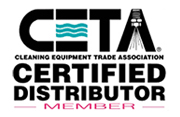Pressure washers rank among the most commonly owned tools for cleaning businesses. These versatile tools can be used to clean everything from exterior siding to delicate interior tile work. As a result, pressure washers tend to experience a lot of wear and tear as time goes on. Unless you make the effort to maintain it, your pressure washer may eventually succumb to serious damage.
Fortunately, pressure washer maintenance doesn’t have to be hard. Provided you stay on top of few basic tasks, you should be able to keep your pressure washer running strong with a minimum of extra effort. This article takes a closer look at three of the most important things you can do to extend the life span of your pressure washer.
1. Flush Out the Pump After Every Use
On a mechanical level, pressure washers consist of simple systems. The washer receives a stream of fresh water from a nearby source. The back of the pressure washer has an attachment point made to receive a garden hose or similar water line. As this water flows into the pressure washer, the main pump raises its pressure to a much higher level.
From there, the water simply has to travel out of the pressure washer through a pressure wand fitted with the appropriate tip for your task. The most important parts of a pressure washer are the pump and the motor used to power it. The pump also tends to be the most vulnerable part of a pressure washer.
Sometimes damage stems from the high pressures generated inside the pump. More often, however, damage ensues from corrosion caused by prolonged exposure to water — in other words, water that remains in the pump after you’ve completed a given job. To prevent such water from causing rust to form, you should flush out your pump after every use.
To flush out your pump, you’ll need a can of pump lube/antifreeze. Attach this can to your inlet port using the built-in hose and press the trigger until whitish foam shoots out of the pressure hose port. This indicates that all of the water has been pushed out, and the inside of the pump now contains a protective coating of lubricant/antifreeze.
2. Replace Degraded O-Rings Regularly
Pump failure may be the most catastrophic form of pressure washer damage — yet it’s far from the only one. The intense pressures generated by your washer place all of its internal components under a high degree of stress. Leaks soon ensue when certain components begin to break down under this pressure.
Your pressure washer contains numerous O-rings used to promote watertight seals in places like the water inlet port, the hose connection port, and the spray gun attachment area on the hose. These rubber rings can take quite a beating, yet eventually they’ll become chipped, flattened, or otherwise incapable of channeling water where it’s supposed to go.
As leaks grow worse and worse, your washer will have a harder time generating the desired level of pressure. Fortunately, you can prevent leaks by regularly inspecting your O-rings for damage and replacing them as necessary.
3. Stabilize Your Fuel
Pressure washers fall into two main categories depending on their power source: gasoline or electric. Gasoline pressure washers have the benefit of being more mobile than electric ones. Yet gasoline washers also require additional maintenance efforts to prevent unwanted damage.
If you intend to leave your pressure washer unused for longer periods of time — anything over a month or two — you must add stabilizer to your gas tank. Otherwise, the gasoline may break down, forming deposits that can gum up your motor and lead to overheating.
For more information on what it takes to keep your pressure washers and other cleaning equipment running strong, please consult the experts at Ben’s Cleaner Sales, Inc.

